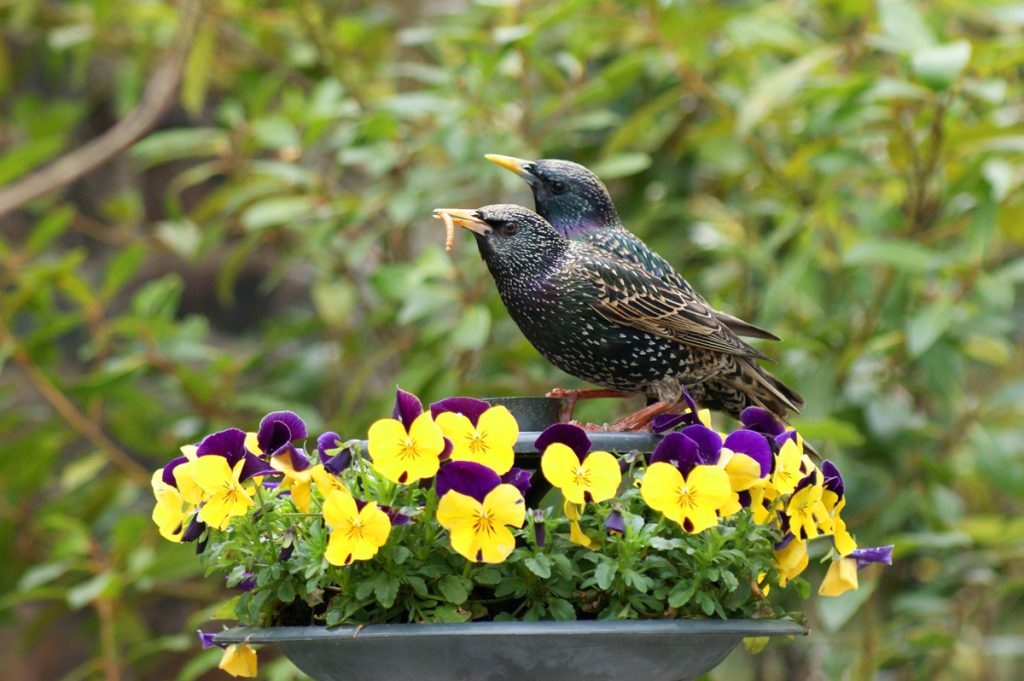
They’re certainly eye-catching, to say the least: shimmering brown feathers topped with a lemon-colored beak, starlings are very easy on the eyes. Unfortunately, they’re very hard on the environment and native bird species. First introduced to the continent in 1890 by ornithologist and Shakespeare fanatic Eugene Schieffelin, who had an ambitious, albeit naive and short-sighted vision of introducing every species of bird mentioned within Shakespeare’s works to Central Park. His hopes of bare branches covered in clusters of skylarks and nightingales were diminished after both flocks perished in the cold New York winter. His temerity persisted, and next he tried bringing over house sparrows, which fared well enough for him to release 60 European starlings. The starlings didn’t just survive their harsh new conditions, they thrived. And from those original 60, starlings now populate the entire continental United States and every territory of Canada. Today they number around 200 million between Alaska and Mexico.
Before I start lamenting the downsides of starlings, it’s worth noting their beneficial attributes. Starlings, like most medium and small sized birds, make quick work of garden pests like caterpillars and moths. They’re also skilled aerial acrobats, performing synchronized dances in murmuration — the name for great flocks of starlings that swarm the dusk sky together to form swirling, swooping clouds above a communal roost site, giving a true feast for the eyes against the sunset.
Unfortunately, these positives don’t negate the overwhelming negative effects of starlings. They exhibit aggressive behavior when searching for a nest, kicking birds out of their nests, and pecking holes in their eggs, even destroying the nests of other birds within their vicinity. They can lay four to five eggs at a time, strongly out-competing native birds. Starlings devour fruit and grain crops year-round, wreaking havoc on the agricultural sector and spreading diseases like salmonella while doing so. In 2012 $51 million in damages were logged for sweet cherries alone, with starlings named as the number-one culprit. Livestock are also victims of invasions- a flock of 1,000 starlings (not an uncommon sight in resource-rich areas) can consume 1.5 tons of feed in 2 months, leaving behind parasitic and viral pathogens in the feed troughs that are then transferred to livestock.
If you see starlings coming to your backyard, you can discourage them by pausing the bird feed for a few weeks. Without a consistent supply of food, they’ll quickly move on to find another source. Cage-type feeders are great for attracting birds with smaller beak sizes and preventing starlings from being able to extract seeds. Starlings favor cracked corn and millet, so keep that out of your feeders until they move along. If you notice starling nests in your gutter or any cavity of your house, clear out the nest without hesitation before clogs and fire-hazards arise. Starlings and house-sparrows are the only exemptions to a federal law that prohibits removal of eggs from their nest. Avoid using poisons or other traps that will affect starlings and native birds alike — you’re liable to do more harm than good that way.
It’s a shame such talented, striking birds must be so detrimental for the other songbirds we love. Nevertheless, we can give a helping hand to native species by discouraging starling proliferation whenever we see them in our backyard.
Author
-

Bryce Flanagan moved from Sacramento, CA to Taos County in 2016, and has lived in Questa for two years. He's passionate about the unique and beautiful wildlife of our state and is a regular contributor to the Questa Del Rio News.
View all posts


